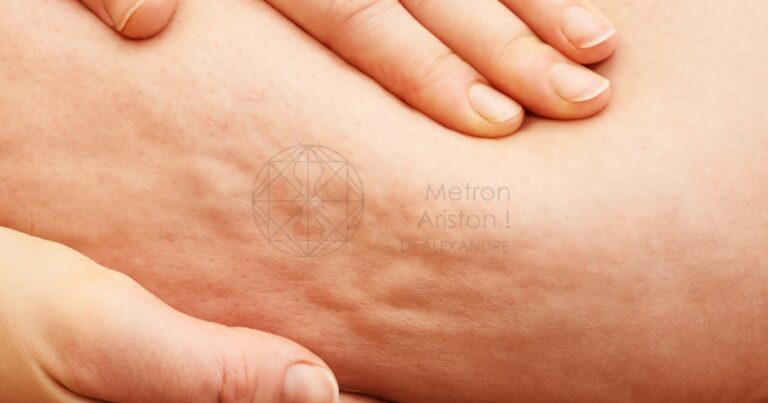Can You Die from Liposuction Risks and Complications?
Liposuction is a popular cosmetic procedure aimed at removing excess fat from specific areas of the body. However, like any surgical procedure, it carries certain risks. This article explores the potential fatality risks associated with liposuction, providing valuable insights for those considering this procedure.
Understanding the potential fatality risks
Liposuction involves the removal of fat through suction, which can sometimes lead to serious complications. These complications may include infections, blood clots, and adverse reactions to anesthesia. In rare cases, these issues can become life-threatening, emphasizing the need for careful consideration and expert medical advice.
Statistics on liposuction-related deaths
While the risk of death from liposuction is low, it is not nonexistent. According to various studies, the mortality rate for liposuction is estimated to be between 1 in 5,000 to 1 in 50,000 procedures. These statistics highlight the importance of understanding the risks involved and choosing a qualified surgeon to minimize potential dangers.
- Mortality rate: 1 in 5,000 to 1 in 50,000
- Common causes: Infections, blood clots, anesthesia reactions
- Importance: Choose a qualified surgeon
Liposuction mortality rates and safety concerns
The safety of liposuction has improved over the years, but it is essential to be aware of the factors that contribute to its mortality rates. Understanding these factors can help patients make informed decisions about their health and safety.
Factors contributing to liposuction fatalities
Several factors can increase the risk of fatal complications during liposuction. These include the patient’s overall health, the amount of fat removed, and the skill level of the surgeon. Patients with pre-existing health conditions or those undergoing extensive procedures may face higher risks.
Common complications leading to death
The most common complications that can lead to death during liposuction include pulmonary embolism, fat embolism, and severe infections. These complications can occur when fat or blood clots travel to the lungs or other vital organs, causing life-threatening blockages.
- Pulmonary embolism: Blood clots in the lungs
- Fat embolism: Fat particles blocking blood vessels
- Severe infections: Bacterial infections post-surgery
Strategies for reducing fatal complications in liposuction
Several strategies can be employed to minimize the risk of fatal complications . These strategies focus on improving patient safety before, during, and after the procedure.
Pre-operative patient screening
Thorough pre-operative screening is essential to identify any potential health risks. This screening process involves evaluating the patient’s medical history, current health status, and any medications they are taking. By identifying potential issues early, surgeons can take necessary precautions to ensure a safer procedure.
Surgical technique improvements
Advancements in surgical techniques have significantly reduced the risks associated with liposuction. Surgeons now use smaller incisions, advanced suction devices, and improved anesthesia methods to enhance patient safety. These improvements have contributed to a decrease in complications and fatalities.
Post-operative care and monitoring
Proper post-operative care is crucial for preventing complications after liposuction. This care includes monitoring the patient for signs of infection, ensuring proper wound care, and providing guidance on activity restrictions. Close monitoring can help detect and address any issues before they become serious.
- Pre-operative screening: Medical history, health status, medications
- Surgical improvements: Smaller incisions, advanced devices
- Post-operative care: Infection monitoring, wound care, activity guidance
Is liposuction worth the risk of dying
Deciding whether liposuction is worth the risk involves weighing the potential benefits against the dangers. Understanding the alternatives and making an informed decision is crucial for anyone considering this procedure.
Weighing benefits against potential dangers
Liposuction can provide significant aesthetic benefits, such as improved body contour and increased self-confidence. However, these benefits must be weighed against the potential risks, including the rare chance of fatal complications. Patients should carefully consider their priorities and consult with medical professionals to make an informed decision.
Alternative fat reduction methods
For those concerned about the risks of liposuction, alternative fat reduction methods are available. These methods include non-invasive procedures like CoolSculpting, which uses cold temperatures to reduce fat, and laser lipolysis, which uses laser energy to break down fat cells. These alternatives may offer safer options for achieving desired results.
- Benefits: Improved body contour, increased confidence
- Risks: Rare fatal complications
- Alternatives: CoolSculpting, laser lipolysis
How to minimize the risk of death from liposuction
Minimizing the risk of death from liposuction involves careful planning and choosing the right professionals and facilities. By taking these steps, patients can significantly reduce their chances of experiencing serious complications.
Choosing a qualified surgeon
Selecting a qualified and experienced surgeon is one of the most critical steps in minimizing risks. Patients should research potential surgeons, verify their credentials, and review their track record with liposuction procedures. A skilled surgeon can greatly reduce the likelihood of complications.
Proper facility and equipment
The facility where the liposuction is performed should be accredited and equipped with the latest technology. Accredited facilities adhere to strict safety standards, ensuring that patients receive the highest level of care. Additionally, modern equipment can enhance the precision and safety of the procedure.
Following pre and post-operative instructions
Adhering to the surgeon’s pre and post-operative instructions is vital for a safe recovery. These instructions may include guidelines on diet, activity levels, and medication use. Following these recommendations can help prevent complications and promote healing.
- Qualified surgeon: Research, credentials, track record
- Accredited facility: Safety standards, modern equipment
- Instructions: Diet, activity, medication
Liposuction safety advancements and technology
Recent advancements in liposuction technology have significantly improved the procedure’s safety. These innovations focus on reducing complications and enhancing patient outcomes.
Modern techniques reducing complications
Modern liposuction techniques, such as tumescent liposuction and ultrasound-assisted liposuction, have reduced the risk of complications. These methods allow for more precise fat removal and minimize damage to surrounding tissues, leading to safer outcomes.
Improved anesthesia and monitoring
Advancements in anesthesia and patient monitoring have also contributed to increased safety. New anesthesia techniques reduce the risk of adverse reactions, while improved monitoring equipment ensures that any complications are quickly identified and addressed.
- Techniques: Tumescent, ultrasound-assisted
- Anesthesia: Reduced risk, improved monitoring
Recovery period risks after liposuction
The recovery period following liposuction is critical for ensuring a successful outcome. Patients should be aware of potential risks and warning signs during this time.
Potential post-operative complications
Post-operative complications can include infections, seromas (fluid accumulation), and changes in skin sensation. These issues can delay recovery and, in rare cases, lead to more serious health concerns. Proper care and monitoring are essential to address these complications promptly.
Warning signs to watch for
Patients should be vigilant for warning signs such as excessive swelling, severe pain, or signs of infection like fever and redness. Early detection of these symptoms can prevent more serious complications and ensure a smoother recovery process.
- Complications: Infections, seromas, skin sensation changes
- Warning signs: Swelling, pain, fever, redness
Legal and ethical considerations surrounding liposuction deaths
Liposuction-related deaths raise important legal and ethical questions. Understanding these considerations can help patients make informed decisions and protect their rights.
Malpractice issues
In cases where liposuction results in death, malpractice may be a concern. Patients should be aware of their rights and the legal recourse available if negligence is suspected. Consulting with legal professionals can provide guidance in these situations.
Informed consent requirements
Informed consent is a critical aspect of any surgical procedure, including liposuction. Patients must be fully informed of the risks, benefits, and alternatives before consenting to the procedure. This ensures that they are making an educated decision about their health. Liposuction discomfort levels Patients may feel sore and achy for a few days after the procedure but most people say it’s not too bad and they can manage it with pain medicine
- Malpractice: Legal rights, negligence concerns
- Informed consent: Risks, benefits, alternatives
Dr Alexandre’s approach to liposuction safety
Dr. Alexandre is renowned for his commitment to patient safety in liposuction procedures. His approach emphasizes rigorous screening and state-of-the-art facilities to ensure the highest standards of care.
Rigorous patient screening process
Dr. Alexandre’s screening process involves a comprehensive evaluation of each patient’s health and medical history. This thorough assessment helps identify potential risks and tailor the procedure to the individual’s needs, enhancing safety and outcomes.
State-of-the-art surgical facilities
Dr. Alexandre operates in state-of-the-art facilities equipped with the latest technology. These facilities adhere to strict safety standards, providing patients with the best possible care and minimizing the risk of complications.
- Screening: Comprehensive evaluation, tailored procedures
- Facilities: Latest technology, strict safety standardsies
FAQ’s
What are the chances of dying from liposuction
The chances of dying from liposuction are relatively low, with mortality rates estimated between 1 in 5,000 to 1 in 50,000 procedures. However, the risk is not zero, and patients should be aware of potential complications. Consulting with a qualified surgeon can help assess individual risks.
What is the most common cause of death from liposuction
The most common cause of death from liposuction is pulmonary embolism, where blood clots block the arteries in the lungs. Other major complications include fat embolism and severe infections. Understanding these risks can help patients make informed decisions about the procedure.
How many people have died from liposuction
Recent data suggests that liposuction-related fatalities are rare, but they do occur. The exact number of deaths varies by region and reporting standards. Factors such as patient health, procedure extent, and surgeon skill can influence mortality rates.
Is liposuction high risk
Liposuction is generally considered low risk compared to other surgeries, but it is not without potential dangers. The procedure’s safety profile has improved with advancements in techniques and technology. Patients should weigh the risks and benefits before proceeding.








